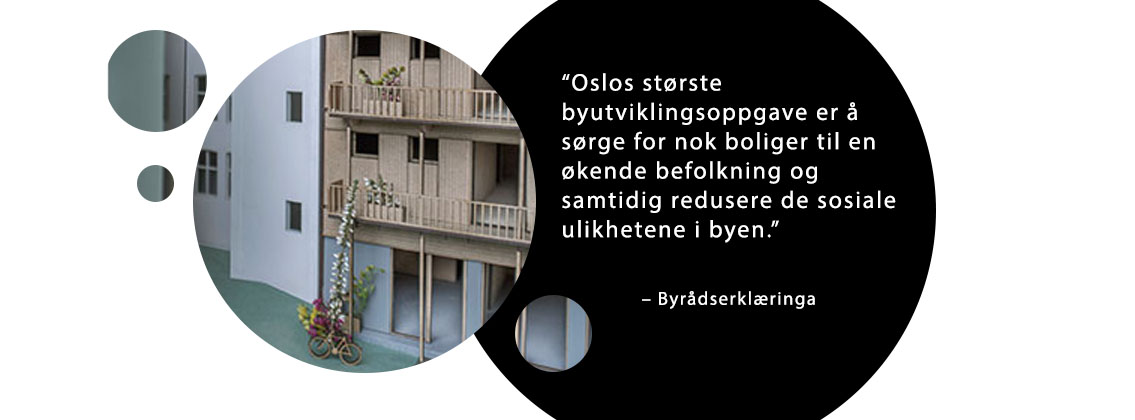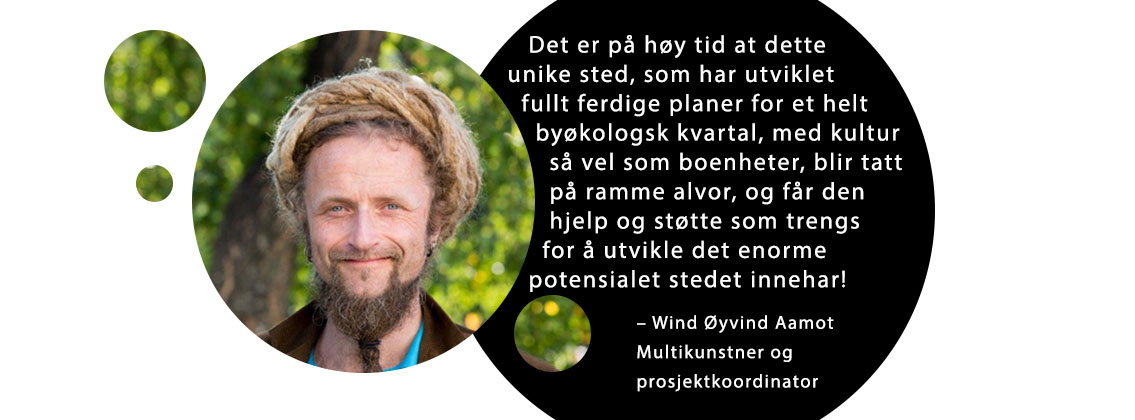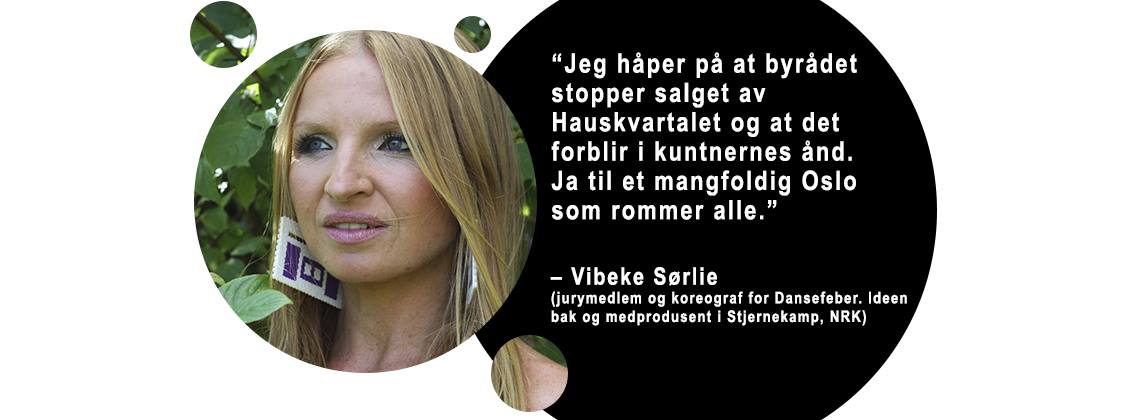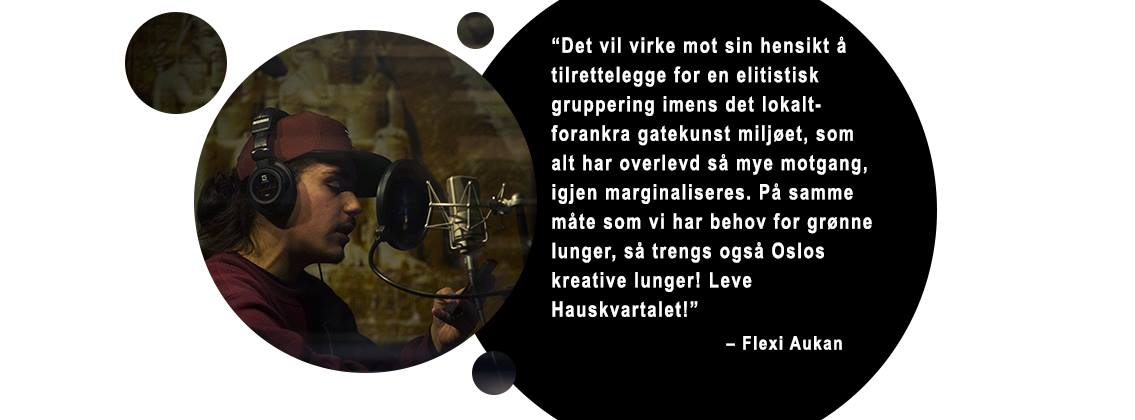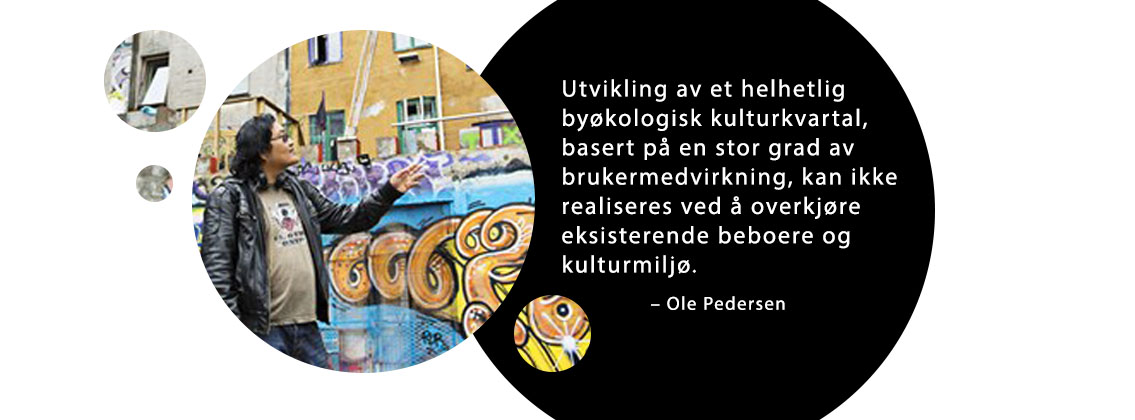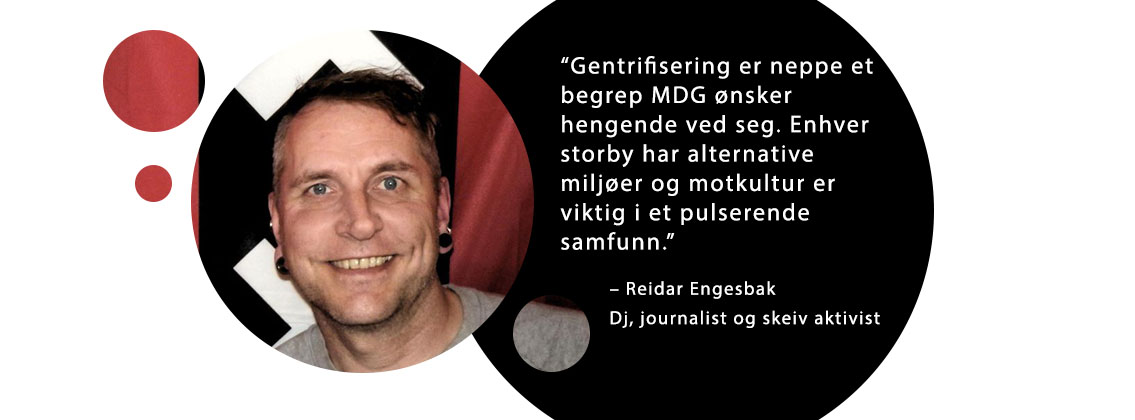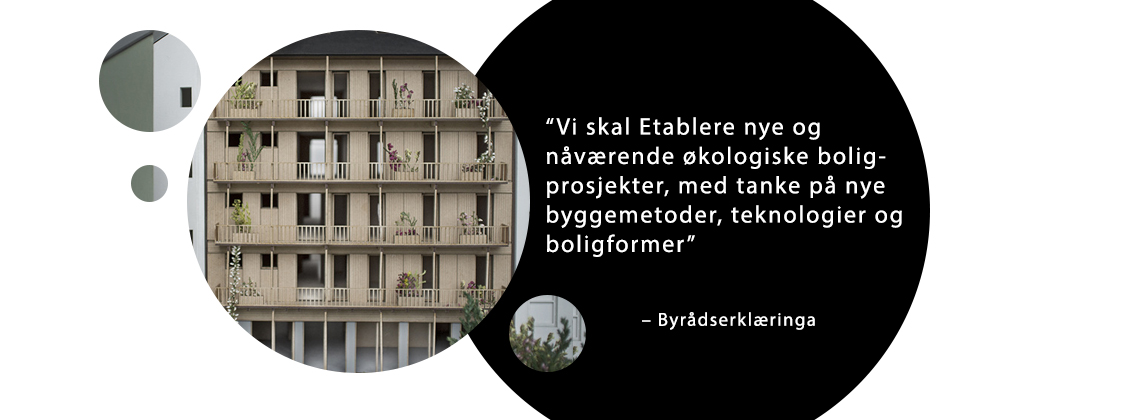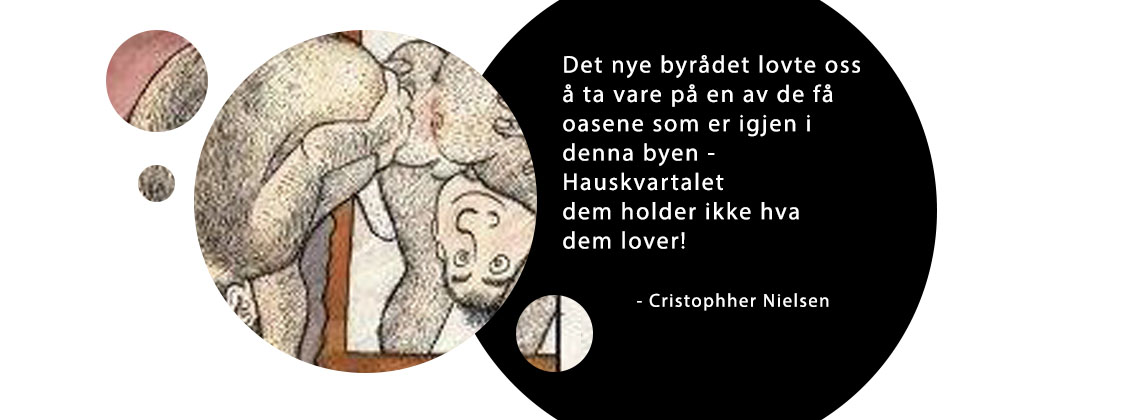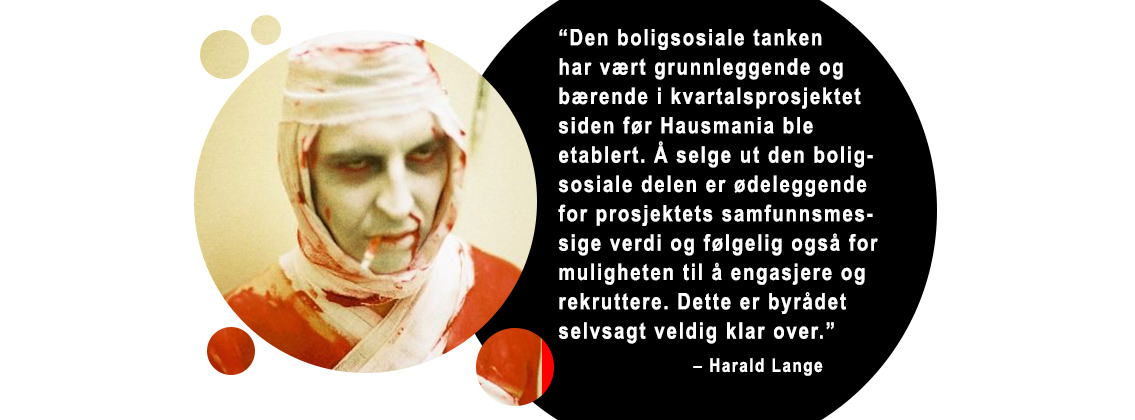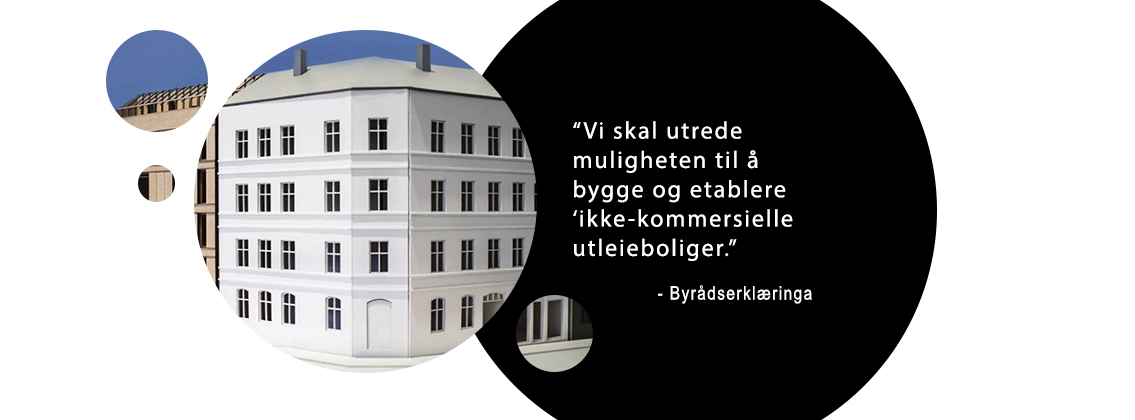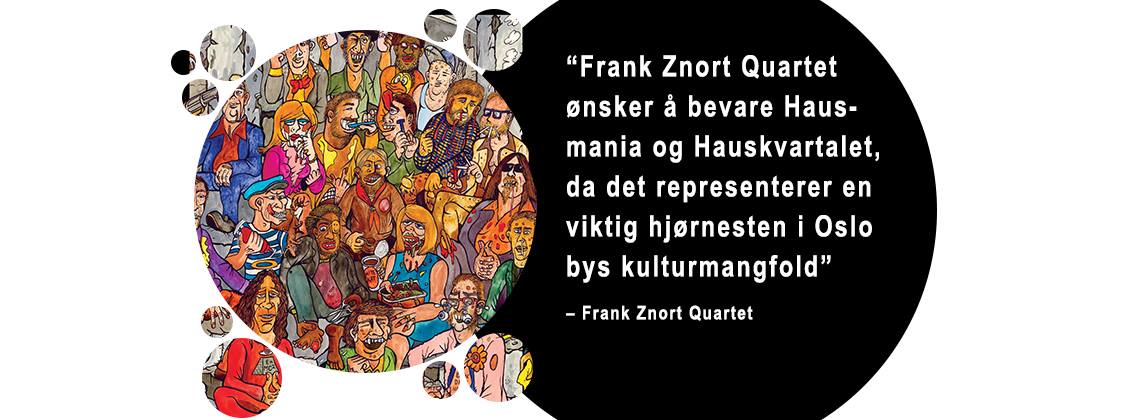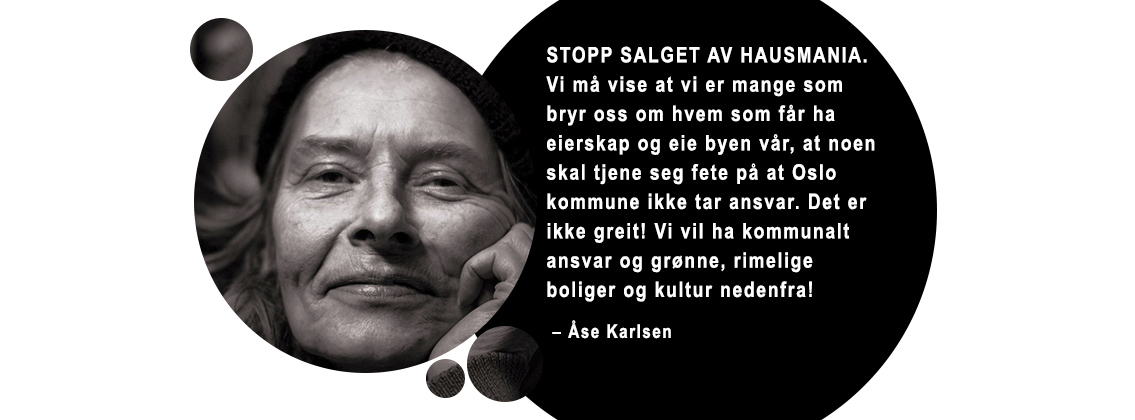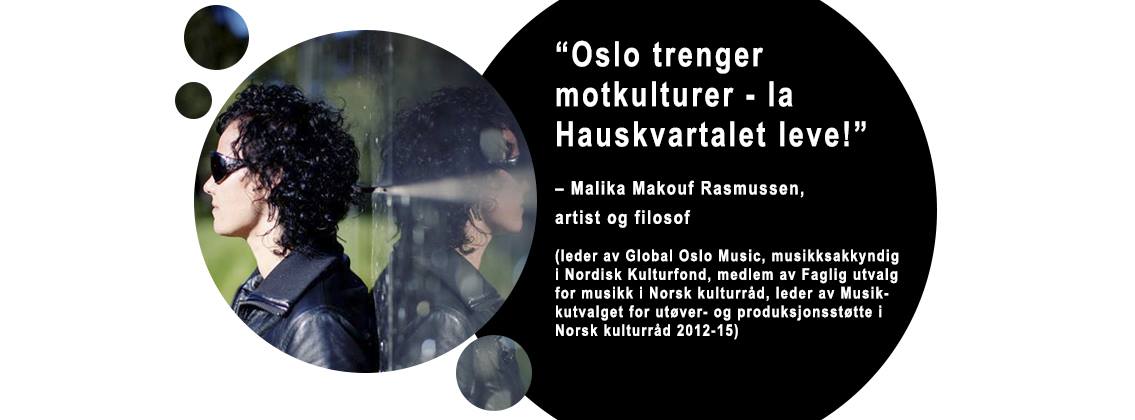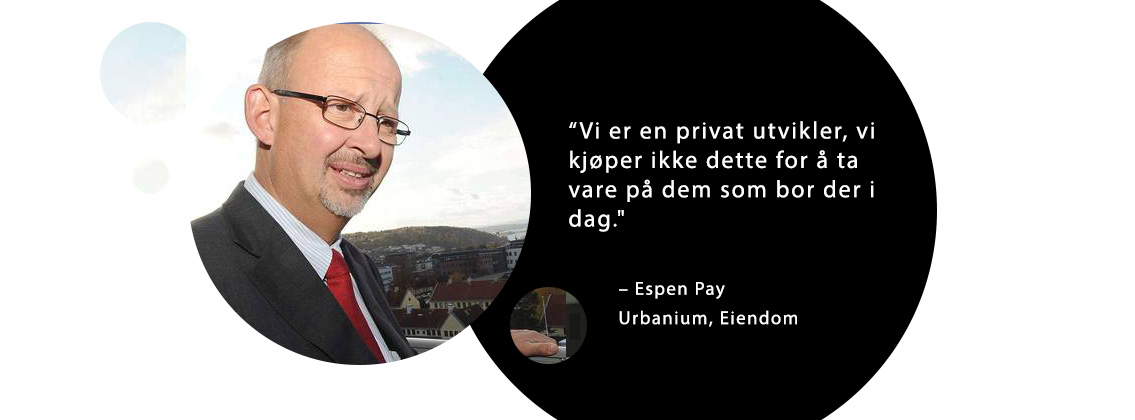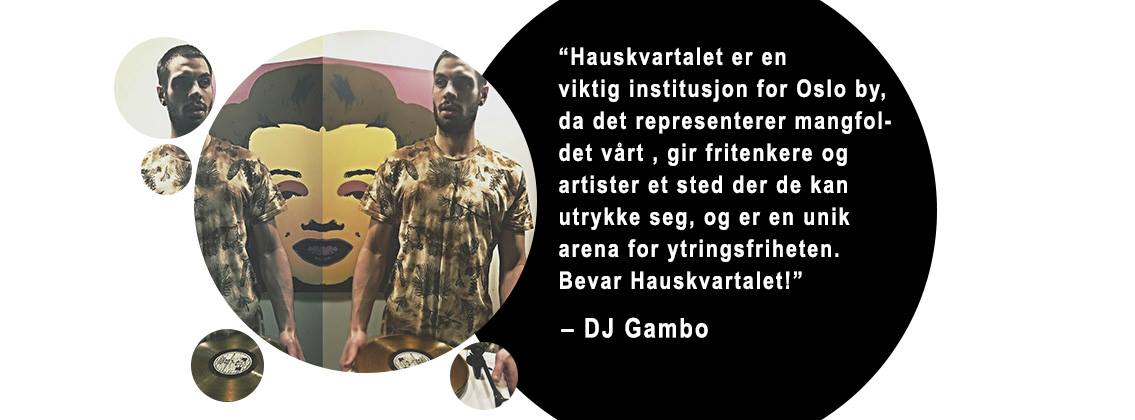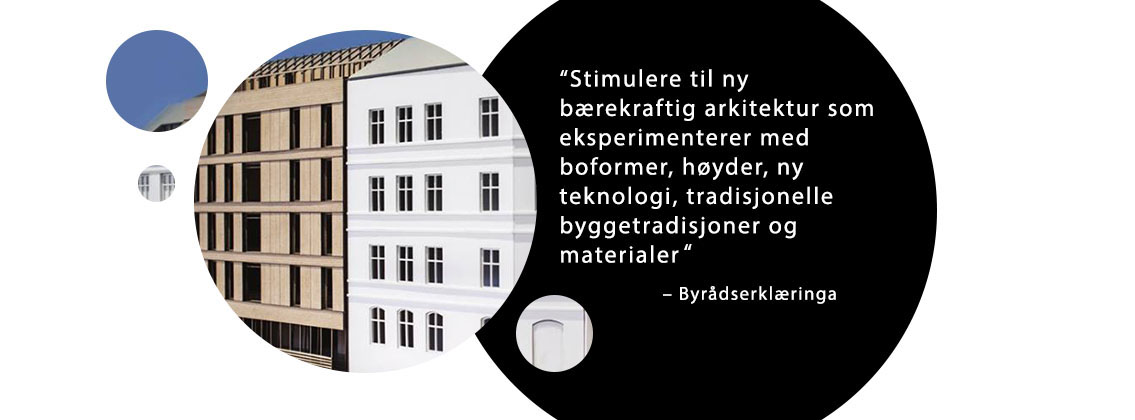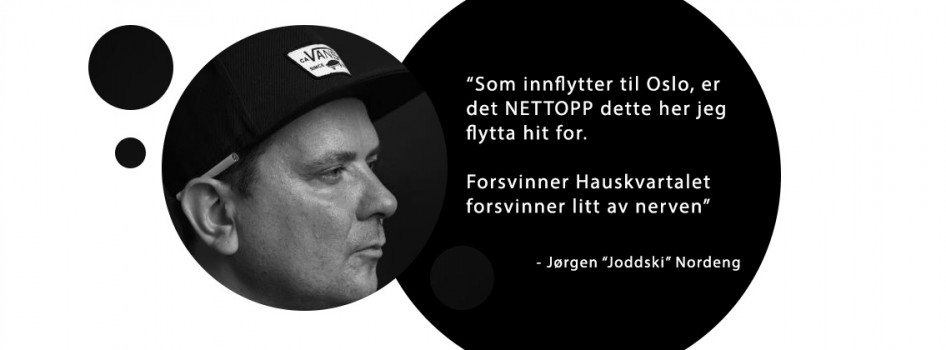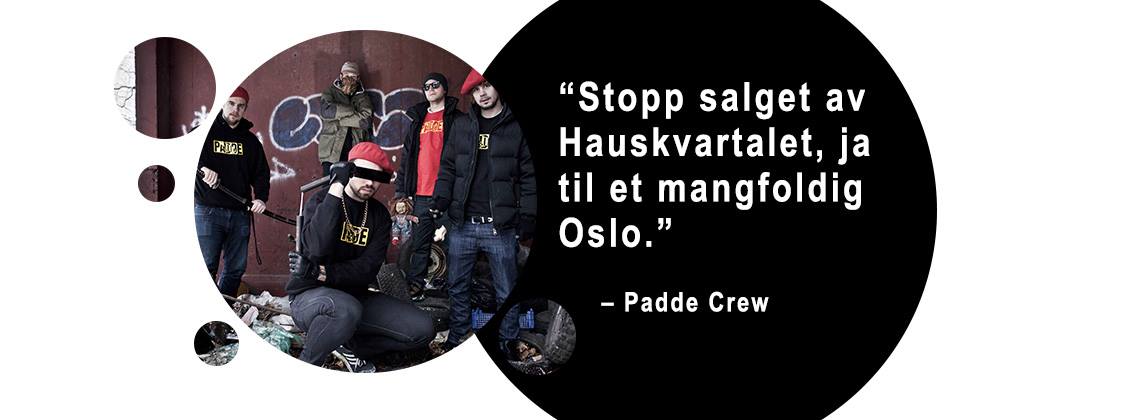Proposal to city council decisions regarding Hauskvartalet (Haus neighborhood) - Citizens' initiative
The background for this proposal is that the city council has delivered a statement that is very ambitious in urban ecology, green city development and architecture. Here they say that they want to: “establish new and present housing projects, utilizing new buldingmethods, technology and housingforms”. Furthermore they want to: “look into the possibility of building and establishing non-commercial residences for lease” and “stimulate for new sustainable architecture that experiments with housingforms, hights, new technology, traditional building traditions and materials”. The residents, artists and cultural workers in Hauskvartalet has completed a project in co-operation with architects and councilors who eant to ecplore new building methods, technology and housing forms. A pilotproject which aims to build and establish non-commercial residences for lease with new sustainable architecture that experiments with housing forms, new technology, building-traditions and materials. If one reads the statement and view the project in Hauskvartalet, one would almost think it was ordered. The project is recieved with enthusiasm in the specialists’ field. So well in fact that one of Esben Titland’s illustrations for the project was used as the front cover of Norske Arkitekters Landsforbund (Norwegian Architects’ National Association)’s yearly rapport for 2014. If the city council wishes to establish credability when they open a chapter on architecture in their statement with: “The city council will lead a municipal architectural policy that allows for probing and challenging projects within architecture and urban spaces, and who have clear goals for climate, aesthetics and quality of life”, then this signal from Norske Arkitekters Landsforbund can be a good place to start. The following are point-displayed arguments for this citizen proposal:
- Destroying for participation
To be able to develop the neighborhood according to the regulation and it’s demands of a high degree of user participation, it’s natural and appropriate to use the time needed for necessary dialogue with the residents and users of the neighborhood in all parts of the process. Also in prepatory measures which will facilitate future development. Extensive work has been done with participation in Hauskvartalet through several years of process, in several phases. A process like the one Asplan Viak (consultant agency that focuses on change and restructuring processes in society) in their rapport “participation really works – evaluation of plan participation in the cities” refers to: “there is no other involvement process that can show such good results.” The way the sale is prepared, combined with how Eiendoms- og byfornyelsesetaten (Official Agency for real estate and urban development) have handled it, has made it difficult if not impossible to arrange the necessary dialogue within the framework of the sale process. This has resulted in a possible outcome which a collected Hauskvartal is clear about not wanting. If one goes through with the sale, one risks therefore destroying the foundation of the neighborhood to realize the regulation through many years of participation processes.
- The costs
The costs that the city council uses to justify the sale with, do not answer to the real plans and costs. The culture house Hausmania has a large maintenence backlog. This especially concerns the two large halls down towards Akerselva (Aker’s river). 50 million NOK is still an unknown amount for those of us who have worked on this. Eby (nickname for the Official Agency for real estate and urban development) got, a bit over a year ago, an offer which implies that the rehabilitation of the halls would end up at a sum well below half. Eby did not have the necessary funds at that point, so the offer was rejected. If the city council wishes to take this seriously it is of course pleasing, but the number 50 million does not seem to be properly anchored. Also the number of 60 million for rehabilitation of Hausmannsgate 40 and 42 (adresses in the Haus neighborhood) is speculative. The number is taken from note 255/2009 where the then existing city councillor for city development Bård Folke Fredrikssen informed the city council about the sale plans for the neighborhood. He says himself in the note that he bases this on a rehabilitation cost of 30.000 NOK x 2.000 m2. Users and residents in Hauskvartalet already then presented why this calculation basis is wrong. One reason is that amount of m2 is exaggerated. Just by putting 1500 m2 as a basis, which is closer to the actual area measurements, one can cut the costs by 15 million. Even more importantly, Hausmannsgate 40 is in a leasable state today. Vestbredden living- and workingcollective has renovated this appartment building by building themselves with their own funds. One can therefore mainly pull Hausmannsgate 40 out of this calculation. There’s a concrete plan to renovate Hausmannsgate 42 to a simple standard with high degree of participation, self-assembly and self-effort. Neither here is it natural to calculate 30.000 NOK per m2. Therefore there’s a good reason to question how well the current councillor has quality proved the cost estimates she uses to justify the sale. To ensure that this resolution is made on a qualified basis, it would be appropriate to overview these cost estimates again.
- Husbanken (the Housing bank)
The preproject for Hausmannsgate 42 and Brenneriveien 1 (adresses in the Haus neighborhood) was submitted to Husbanken. Husbanken has thereafter given a detailed answer on how they can contribute with finances and on what terms. They say: “The project is evaluated as a good and concrete measure to revitalize ambitions in urban ecological program and Husbanken basically wishes to contribute to a realisation of this pilot project.” One can find the whole statement on page 70 in the project description that Husbanken themselves have put on their home page. Therefore it’s not like Oslo city council is forced to sell Hauskvartalet to avoid ending up with the costs solitarily.
- Formal demands
Hanna E. Marcussen (the current city councillor for city development) says in her chronicle in Klassekampen (the norwegian newspaper “Class war”) saturday december 5th that: “It’s very unfortunate that the offer, which local actors in the neighborhood developed together with commercial actors, was denied because of formal demands.” Unfortunatly she doesn’t specify which formal demands she’s refering to. The bid Hausmania submitted together with Anthon B Nilsen (a real estate company which focuses within property development and provision of private education) satisfied every formal demand concerning economical garanties, development deadlines, technical standards, and so on. Word for word Eby says that the bid was rejected because: “The precondition given in the original bid for the city council to agree with those who stay in H40 is maintained in the revised bid. On this basis the bid still contained subjects that could not be accepted, and the bid was rejected.” So the bid was rejected because Hausmania together with Anthon B Nilsen said that it wouldn’t be possible to achieve a good participation process if the sale goes through, against the Hausmannsgate 40 residents’ will. If the sale is completed according to current plans, the necessary trust that a participation process requires, will be destroyed. This is something far from formalities. This is the actual basis needed to realize the regulation.
- Economical claims
The city councillor for city development says to Arkitektnytt (Architect news) december 4th that she’s scared of claims if the city council stops the sale and announces it again for sale to someone else. This is a hypothetical problem. Nobody is suggestion that kind of process. The neighborhood can develop without announcing it for sale again. Therefore there is no reason to fear any claims.
- How to solve it
6.1. Oslo city council goes into dialogue with Bo og Arbeidssamvirket Vestbredden Vel Vel (Living and Working community Vestbredden Vel Vel) about a long term and collective lease contract for Hausmannsgate 40, which is economically sustainable for both the residents and the municipality. 6.2. Co-operation with Hausmania, Eriksen Skajaa Arkitekter (architect firm) and Husbanken about establishing a social housing foundation which will develop and run Hausmannsgate 42 and Brenneriveien 1. There’s several ways this can be resolved without the city council having to sell the properties. Oslo city council can for example either step up as an active part in the foundation, or they can set up the basis for it. 6.3. There’s been many different proposals for Sirkustomta (the circus lot). Vega Scene (cinema and theatre house), a training hall for circus, a culture school or a multiple usage hall with connections to Elvebakken school, are all proposals that can fill needs in Oslo municipality. By selling the property, the city council disclaims the opportunity to participate in what function this space should fill. Proposal for resolution: “Oslo city council will establish, or facilitate establishment of, a non-commercial housing foundation which will develop and thereafter run Hausmannsgate 42 and Brenneriveien 1. Oslo city council will enter into negotiation to write a long term and collective lease agreement with Bo og Arbeidssamvirket Vestbredden Vel Vel.” Created: Dec 8th 2015 by Et samlet Hauskvartal (a united Haus neighborhood) Recipient: Oslo End date for signing: Jan 8th 2016 Translated from original version: https://minsak.no/sak/902
